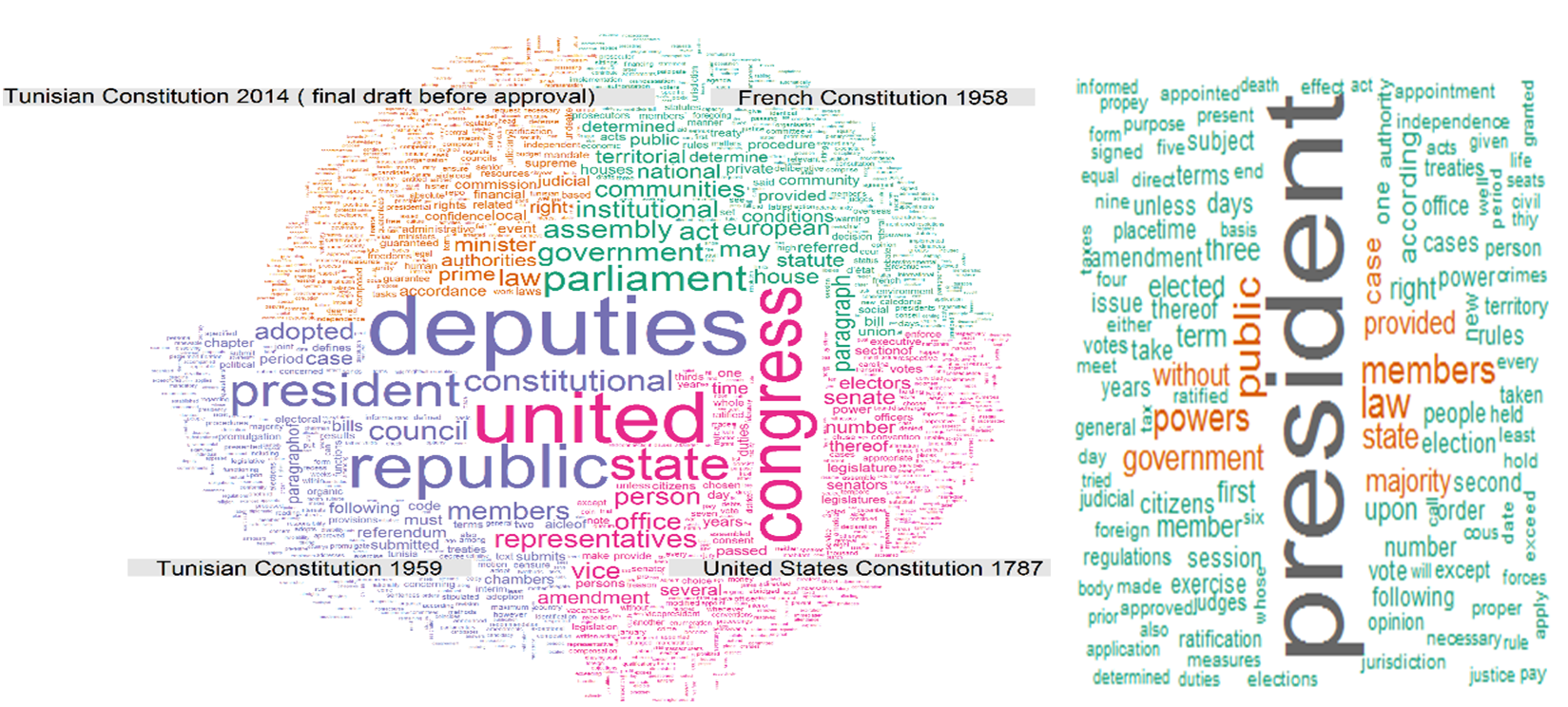As the new constitution of the Tunisia’s second republic is now finally passed with an overwhelming majority, we look this week into some of the key features
of the final draft (before the historic approval on Jan 26, 2014). Using the Text mining technique, we attempt to contrast our findings with 3 other important benchmarks, namely the first Tunisian constitution of 1959, the latest French constitution of 1958 and the United States constitution of 1787. While our goal is to leave it up to our readers to make their own conclusions on this comparative analysis, we find it interesting to highlight few results that appear quite telling.
In contrast to the first constitution where certain keywords seem to “drive” the overall constitutional framework such as; President, Republic, deputies, we notice that in the current constitution no single keywords appears to dominate the text (with some minor exceptions for words; Prime, Minister, Law, authorities, rights). This relatively low frequency of repetitive keywords in the final draft of the 2014 is quite pronouncing when compared to similar texts in more democratic societies (e.g., USA and France). We will dedicate some of our coming notes to further understanding the underlying reasons of such findings and more importantly the potential implications on the new Tunisian constitutional framework.
To complement this preliminary analysis of the constitution, we plot in the graph 2 the common words that are frequently found in in the four texts we are studying in this note. Not surprising to find that the most widely repeated word across the four constitutions is the head of the executive branch (“President”) which in presidential or quasi-presidential regimes tends to maintain an important role in the political landscape of the country (be it a fully democratic regime or in transition to become one). Other keywords such as; majority, Government and Law appear to overlap across the four constitutions.
This note is a first contribution toward better understanding the new constitution and its challenges. We will have other opportunities in the future to build on this note and deepen the analysis to shed some light on other less transparent aspects of the new constitution.

